Visiting the main sights of Swakopmund and exploring the Skeleton Coast on The South of Africa Tour where I visit 13 new countries.
The fourth largest city in Namibia was started in 1892 as a German harbor. Eventually the British took over and transferred the harbor activities to Walvis Bay. The town then started to shrink, but was revitalized as a tourist destination. Uranium was also found near the city which lead to the development of the world’s largest opencast uranium mine. This has also brought more investment into Swakopmund.
The city offers many original German colonial buildings and a relaxed atmosphere with great restaurants serving seafood and German fare as well as an upbeat nightlife. Many of the locals still speak German today.
Driving from Windhoek, I had a couple of days to explore Swakopmund, drive north to Cape Cross and see a bit of the Skeleton Coast.
I arrived in the evening and planned my visit from the hotel. Then spent the next day visiting the sites and toured Sandwich Harbour and Cape Cross the day after.
Swakopmund Hotel and Entertainment Centre
My hotel was also one of the main sights of the city as it use to be the main railway station. Built in 1901, it was functional until the 1990s when the station was moved nearby. The main lobby and bar is where the original station was. Outside on the terrace overlooking the pool was the original terrace.
In October, 1972 the building was declared a national monument which draws visitors to this day.
Check out my review of Swakopmund Hotel.
Colonial Buildings
The city is dotted with colonial architecture with buildings from the late 1800s and early 1900s. Several tourist maps point out the buildings of interest such as the Woermannhaus, now used as a public library.
Swakopmund Museum
Founded in 1951, by Dr. Alfons Weber, this small museum houses displays of Namibia history, bird eggs, rocks, a uranium exhibit and colonial times.
Lighthouse
Built in 1903, the lighthouse started at only 11 m high, and then in 1910 it was raised to 21 m. Especially important on this dangerous coastline, the light can be seen over 30 km out to sea. Next door is the Kaiserliches Bezirksgericht, the presidential vacation home.
Kristall Galerie
This collection of crystals and gems was started by Johannes Adolf Kleynhans and opened in 1998. It’s famous for displaying the world’s largest Quartz crystal cluster.
Seaside Walkway
The promenade along the coast offers beaches, restaurants and activities. A crafts market is near the museum and has many paintings, carvings, furniture and woodwork for sale. When I went by there was also a group from the Himba tribe famous for their mud hair selling crafts.
The jetty started in 1905 and converted into a steel jet in 1914, offers some scenic views.
There are several restaurants there. I dined at The Tug a popular seafood restaurant serving fresh catches of the day.
Cape Cross
In 1484, the Portuguese explorer Diogo Cão was the first European to land in the area. He erected a stone cross which is where the cape got its name. Owned by Namibia is the protected Cape Cross Seal Reserve, one of the world’s largest colonies of Cape Fur Seals. Along with Luderitz, Cape Cross has a seal culling program for selling hides and protecting fish populations.
After my tour of Sandwhich Harbour, I quickly drove 120 km north of Swakopmund to try to visit the seals. Near the reserve were tables set up to sell souvenirs with blocks of salt left that vendors didn’t bother to take home.
Unfortunately I found the park closed, so I hopped the gate and decided to explore on foot. I realized I had about 5 kms to walk before I got near the seals and it was getting dark fast. Not wanting to wander around the desolate area without a flashlight where snakes are in abundance, I decided to take some pictures from a distance and turn back.
I stopped by the Cape Cross Lodge where the beach had a few dead and near death seals that washed up. They could have died from exhaustion, starvation, disease, among other reasons.
Skeleton Coast
The name alone evokes a sense of mystery and adventure. This coastline stretching from the south of Angola all the way to Swakopmund was invented by the author John Henry Marsh for his book about a shipwreck. It has also been called the “Gates of Hell” by Portuguese explorers and “The Land God Made in Anger” by Namibian bushmen.
With over a thousand wrecks on the coastline, the combination of dense fog, strong winds, and a constant surf the conditions are ideal for trapping unprepared vessels.
I was able to spot two wrecks, though none of the spectacular ones farther away.
Today, Skeleton Bay is known for surfing and there is also the Skeleton Coast National Park for animal spotting.
The northern coast of Namibia was really diverse from other parts of Africa and exciting to discover. With just a small rental car, most roads were accessible and easy to access. For more extensive exploration like Sandwich Harbour, a 4×4 would be needed.
Even in the limited time I had, the visit left a strong impression and I yearn to visit again to discover more!
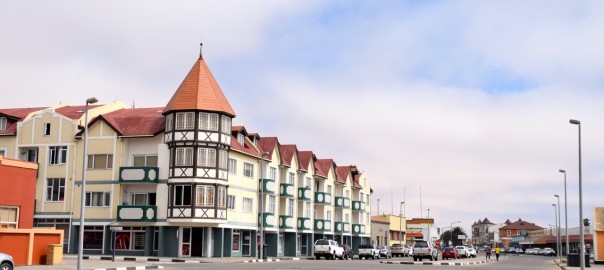
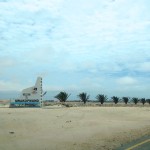
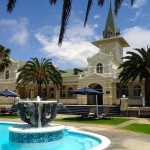
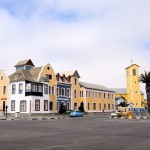
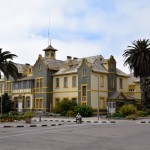
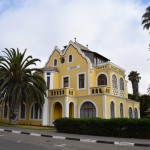
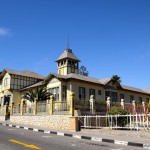
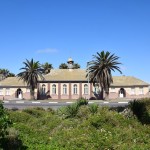
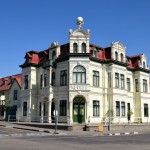
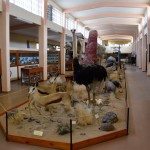
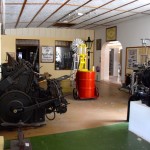
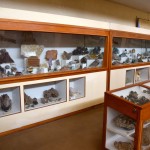
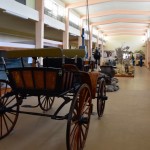
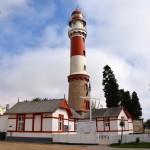
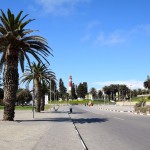
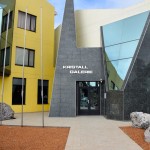
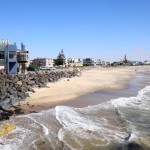
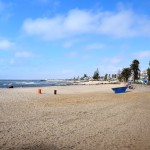
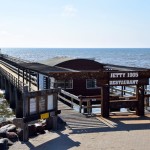
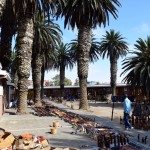
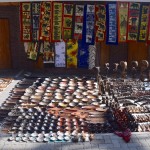
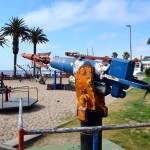
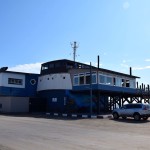
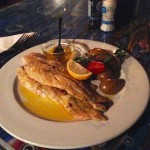
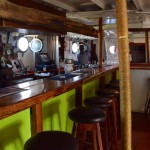
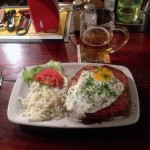
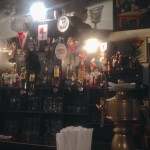
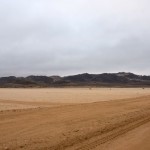
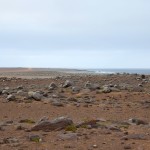
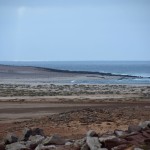
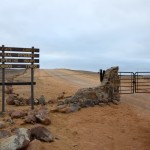
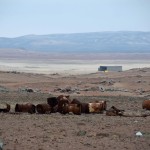
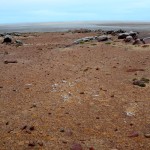
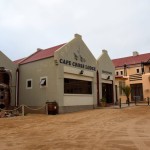
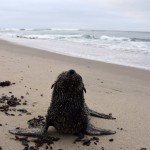
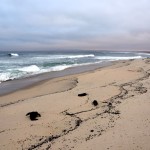
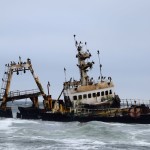
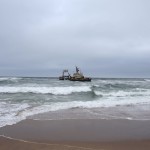
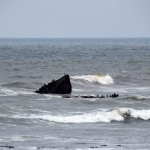
Pingback: Windhoek The Capital of Namibia | World-Adventurer()
Pingback: Sandwich Harbour an Unforgettable Experience | World-Adventurer()
Pingback: Luderitz | World-Adventurer()